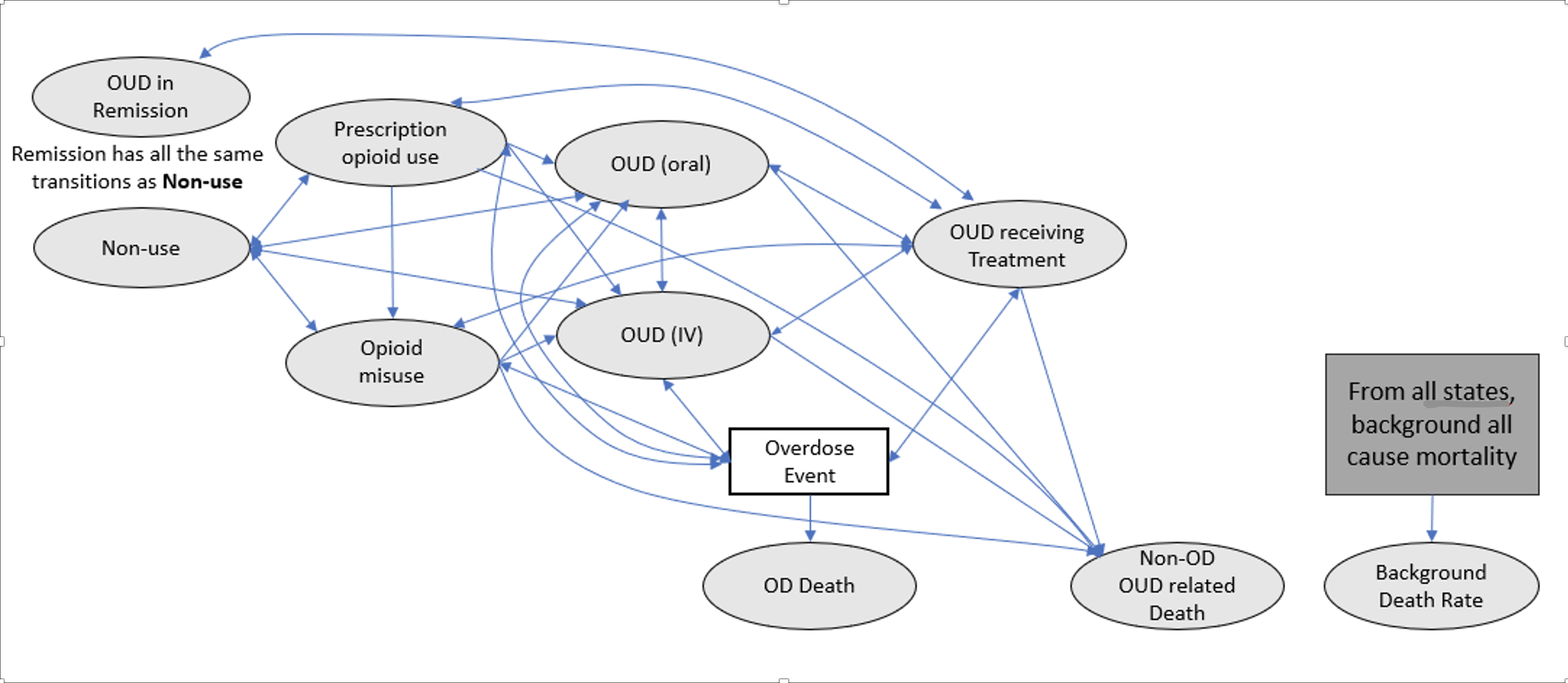OUD Simulation Model Description
Simulation model of OUD represents the disease as a series of clinical states through which individuals may pass through. The model described on these pages determines the individual trajectories of the entire population in the model.
This state contains the population at risk of opioid use or developing opioid use related problem and disease. Only people who have not had a prior OUD are in this state. Currently, agents enter this state at the age of 18. The members of this state can increase with births and decrease with all-cause mortality.
Individuals in this state are using prescribed opioids.
Individuals in the Misuse state are those who are using prescription opioids but not prescribed to them or not as they are prescribed.
This state contains individuals with OUD who exclusively use opioids (prescription opioids or illicit opioids) orally. Each individual may also use other drugs (Polysubstance use) but these are not injected.
This state contains individuals for whom some component of their drug use is through injection. They also may have oral use in addition.
The overdose event is a transient state that may occur for any individual who uses opioids, although the probability of experiencing an overdose varies with the user’s current state. The likelihood of developing an overdose is dependent not only on the characteristics of the individual, but also the characteristics of the location in which the individual resides.
Individuals who use opioids may transition to treatment, with a probability based on a complex function of individual characteristics, the local availability of treatment, and other factors. The current model only represents treatments with Buprenorphine, Methadone and Naltrexone.
The definition of remission is complex. For this model, it is defined as receiving MOUD treatment for at least 360 days and not having used opioids in last 90 days. Individuals in this state may or may not continue to receive MOUD thereafter.
This state specifically counts those individuals who have died of an overdose.
There are many health effects of OUD that increase mortality, and the model has a general increase in all-cause mortality from the use of opioids, and also contains specific representations of those deaths produced by injection complications (cellulitis, endocarditis, HIV, Hep C, etc.).
